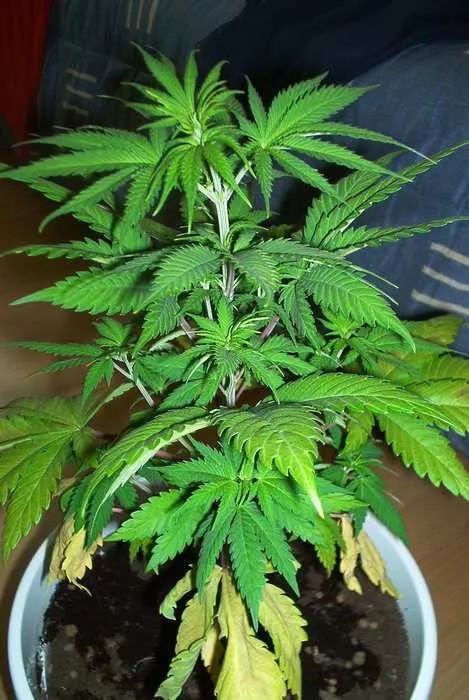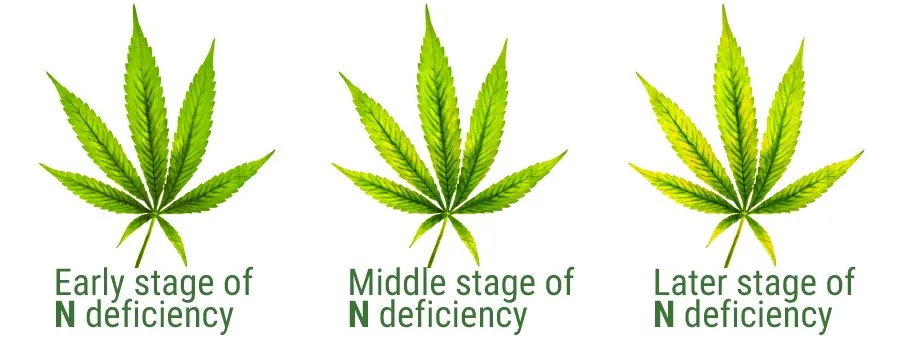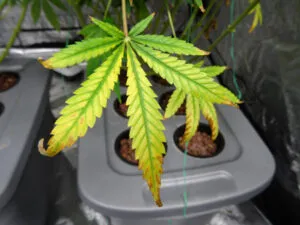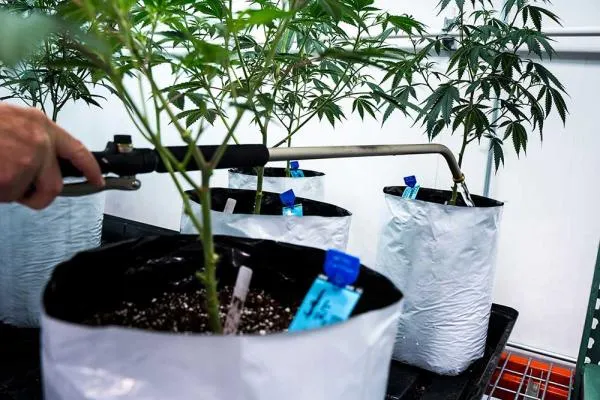Growing a marijuana plant is exciting! However, it can also be a delicate balancing act, providing just enough of what the plant needs to grow. Any marijuana nutrient deficiency can adversely affect the plant in a large way. If either of these problems are not treated right away, the plant may die. Nitrogen is one of the main nutrients a marijuana plant needs. When it doesn’t get enough, it will start to show symptoms of a nitrogen deficiency. What are the symptoms of nitrogen deficiency you ask? Well we'll get to that in a moment.
Why do marijuana plants need nitrogen?
Nitrogen is a mobile nutrient, meaning that it will travel throughout the entire plant, moving up the stem and then from leaf to leaf. There are many nutrients marijuana plants need. Among them however, are three main nutrients that are especially important to a plant’s growth. These are nitrogen (N), phosphorous (P), and potassium (K).

Nitrogen is especially important because it aids with the plant’s photosynthesis process. This is essential for plants, as it helps the plant convert sunlight into energy in order for the plant to survive. Nitrogen also helps transport amino acids throughout the leaves. These are the building blocks of the plant’s proteins, also allowing it to thrive. Nitrogen also helps boost the plant’s immune system, which will help it fight off disease.
Plants may be more prone to a nitrogen deficiency during the vegetative stage of growth. This is when the marijuana plant will need higher levels of nitrogen. Most plant foods found at gardening centers will already contain high levels of nitrogen. This makes them a good fit for cannabis plants that are in the vegetative stage.
During the flowering stage, plants will need less nitrogen. Therefore, growers should find plant food that is lower in nitrogen, which can be more difficult to find. While the plant is in this stage, a bloom or cactus style plant food will work best. If these steps are not followed, it can lead to a marijuana nitrogen deficiency, which could kill the plant if not treated promptly.
What are the signs of nitrogen deficiency in a marijuana plant?
There are many ways growers can spot nitrogen deficiencies in plants. Some of the most common symptoms are:
- Pot leaves turning yellow. This is one of the main signs of a nitrogen deficiency in marijuana. It’s important to remember however, that yellowing marijuana leaves will occur in the lower portion of the plant. If the top leaves start to turn yellow, it may mean there are other marijuana deficiencies
- While it may be the bottom marijuana leaves that yellow, the higher leaves may also start to yellow if the nitrogen deficiency is not corrected.
- As the marijuana leaves yellow, they will continue to curl and discolor further. Eventually starting to droop and fall off.
- When a nitrogen deficiency is present, the plant may be shorter with small leaves.
- Nitrogen deficiencies can also cause a plant to flower prematurely and provide a lower yield.
- In addition to the problems the weed leaf may experience, the stem may also become weak. If a stem starts to turn red, it’s an indication the plant may have anitrogen deficiency.

There are two main causes of a nitrogen deficiency in marijuana plants.
- The first is obviously that the plant simply does not get enough nitrogen. This will likely happen during the vegetative stage, when the plant needs more nitrogen than almost any other nutrient.
2. The other cause of a deficiency is that the PH level of the soil is not correct. When this happens, the plant will not absorb the nitrogen it’s been given, even when it has been given enough.
How to fix nitrogen deficiency in a marijuana plant
Once growers spot the signs of a nitrogen deficiency, there are a few things that can be done to try and fix it.
The first thing to try when correcting a deficiency is to check the ph levels of the growing medium. This can be done with simple ph testing papers or a ph meter.
Ph Level in hydroponics
When marijuana is being grown hydroponically, the proper ph level is 5.5, which means that it should be fairly neutral.
Ph level in soil
When the marijuana is being grown in soil, it will grow best with slightly acidic ph levels of about 6.0 to 6.5. Checking these levels and making sure they are at the proper levels will ensure that any nutrients given to the plant will actually be absorbed.

Once the ph levels have been balanced, a nutrient rich in nitrogen can be used if the plant is still in the vegetative stage. In addition to high-nitrogen nutrients, nitrogen supplements can also be added to a regular feeding schedule.
After following these steps, marijuana plants should recover in about a week. However, the leaves that have already turned yellow will never recover and therefore need to be carefully removed from the plant.
During the flowering stage more nitrogen can be given if a deficiency is suspected. However, it’s important to be careful during this stage. Plants will not need as much of the nutrient and can even suffer from nitrogen toxicity if too much is given. It’s also important to understand that as the plant gets closer to harvest, the leaves will begin to yellow naturally. This is nothing to worry about and growers don’t have to worry about correcting this problem.
Those growing organic cannabis can also find natural ways to correct nitrogen deficiencies. Outdoor plants will do very well with composted manure, although it’s not recommended for indoor plants due to the smell. Bat guano can also be added to plants that are being grown outdoors.
Organic nutrient options
Organic marijuana being grown indoors can have fish meal added to it, which will be rich in nitrogen. A fish emulsion will also act similarly to fish meal and can be added while the plant is being watered. Of course, organic nutrients can also be found including Medi One, Grow Big, and Botanical Pure Blend Pro Grow.
A nitrogen deficiency in marijuana plants can start as a minor problem that turns major if not spotted and treated. Growers need to constantly be on the lookout for these deficiencies, and know how to correct them when they occur.









